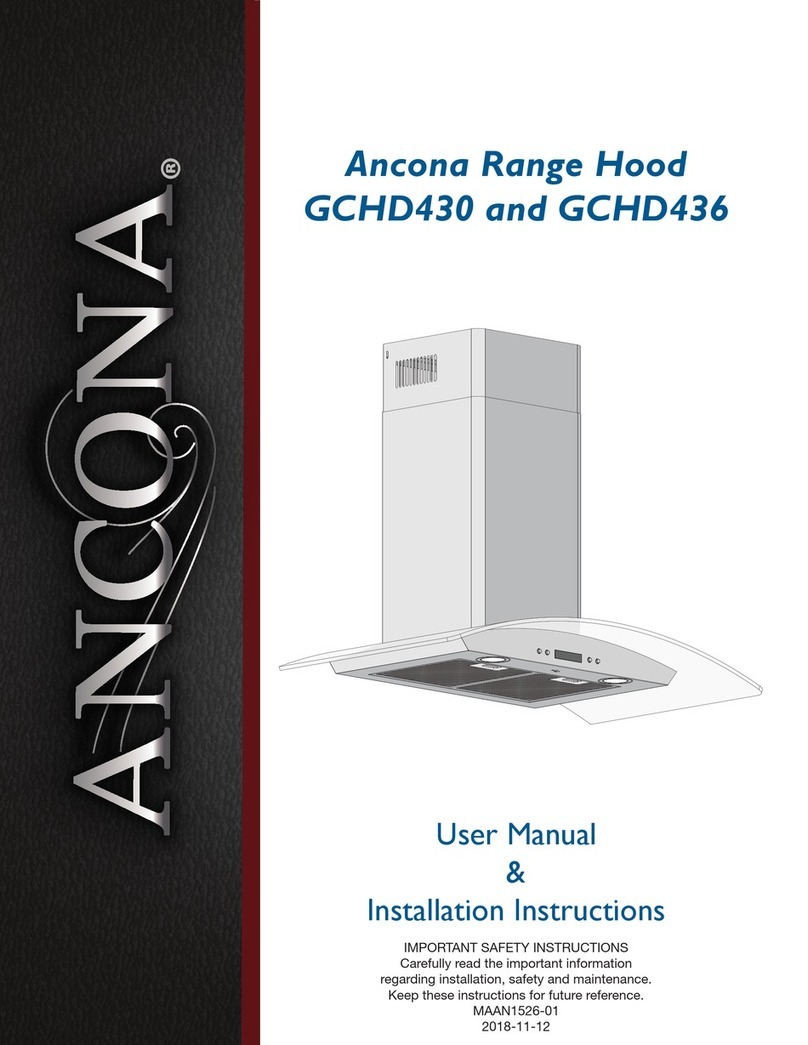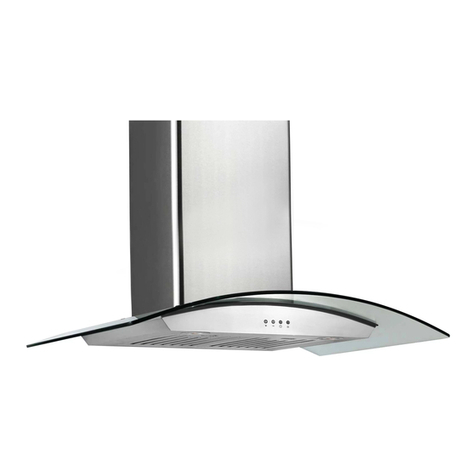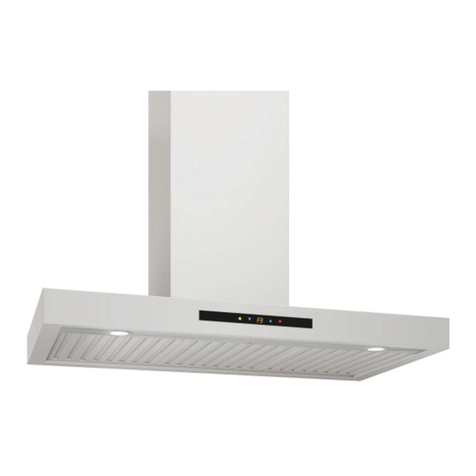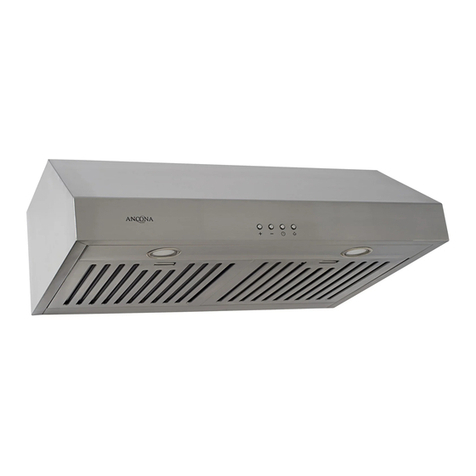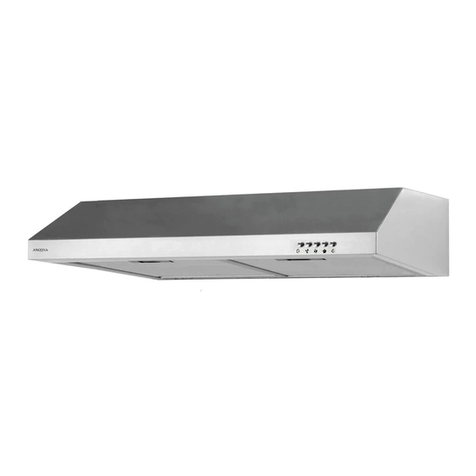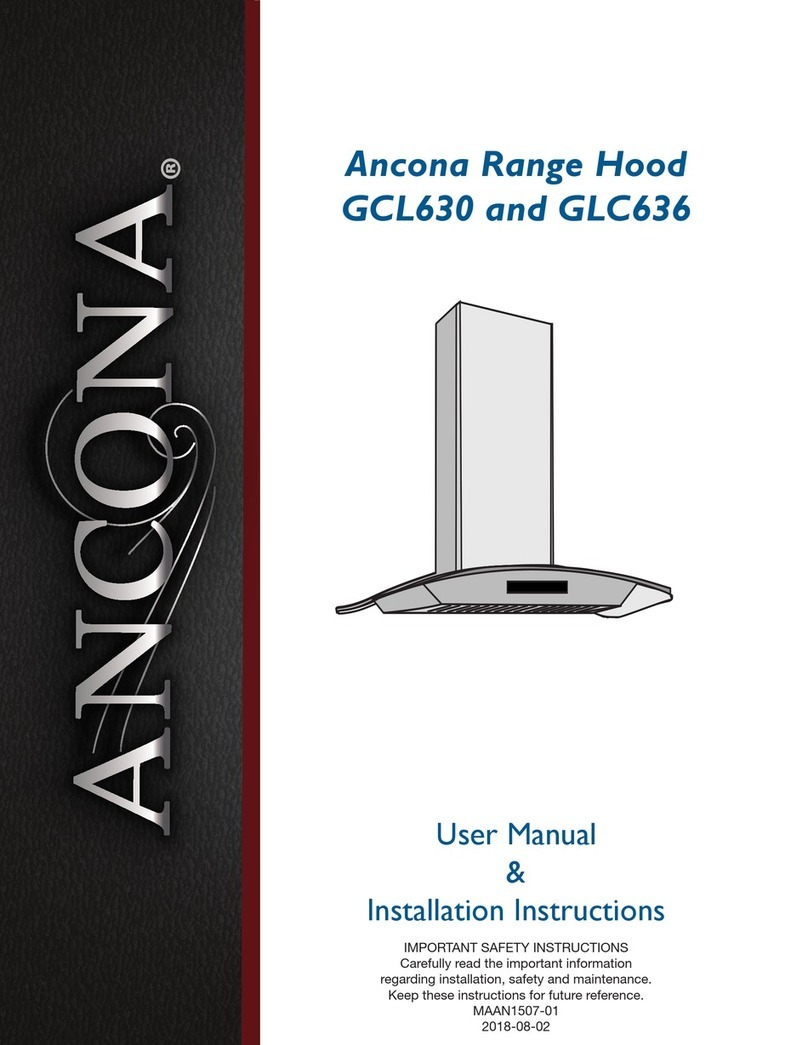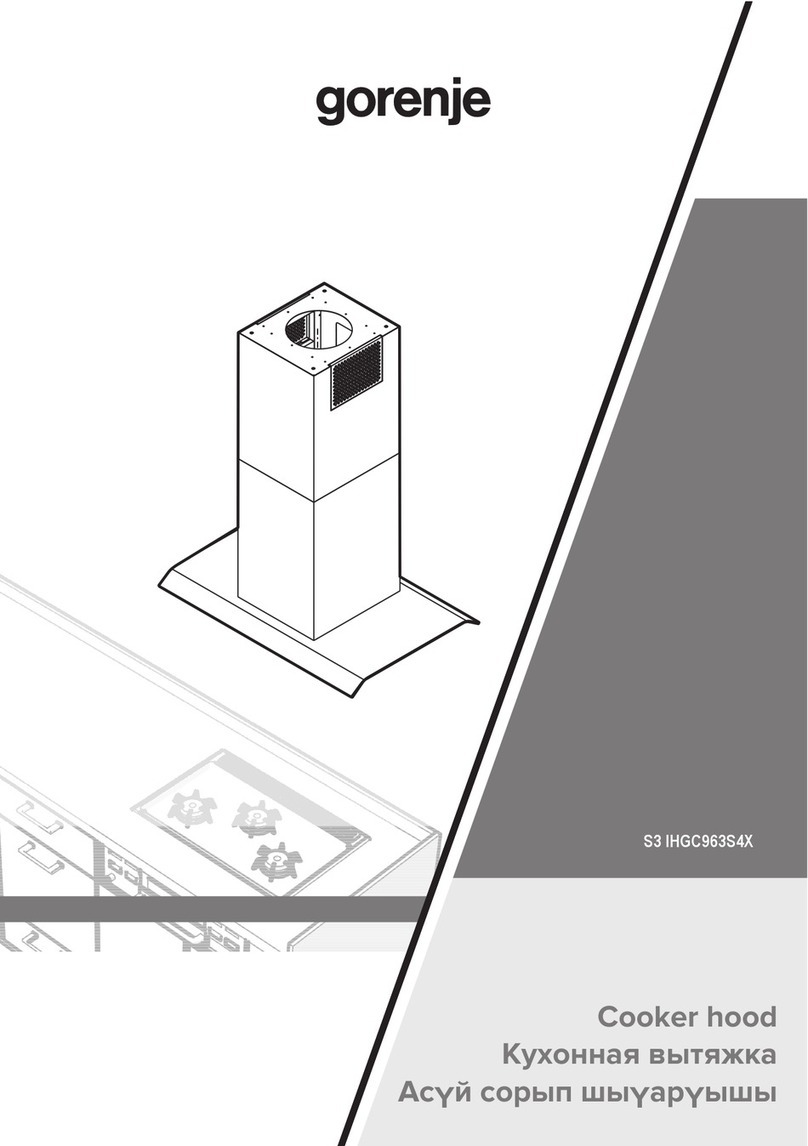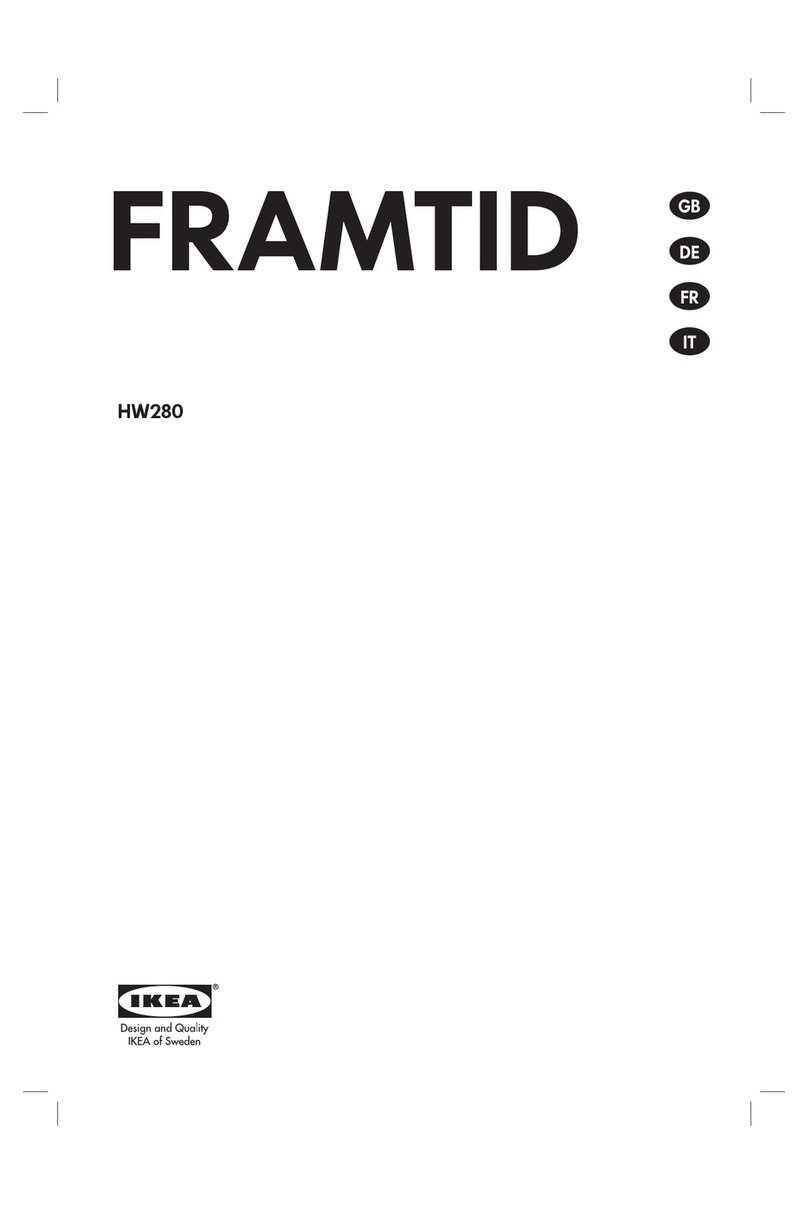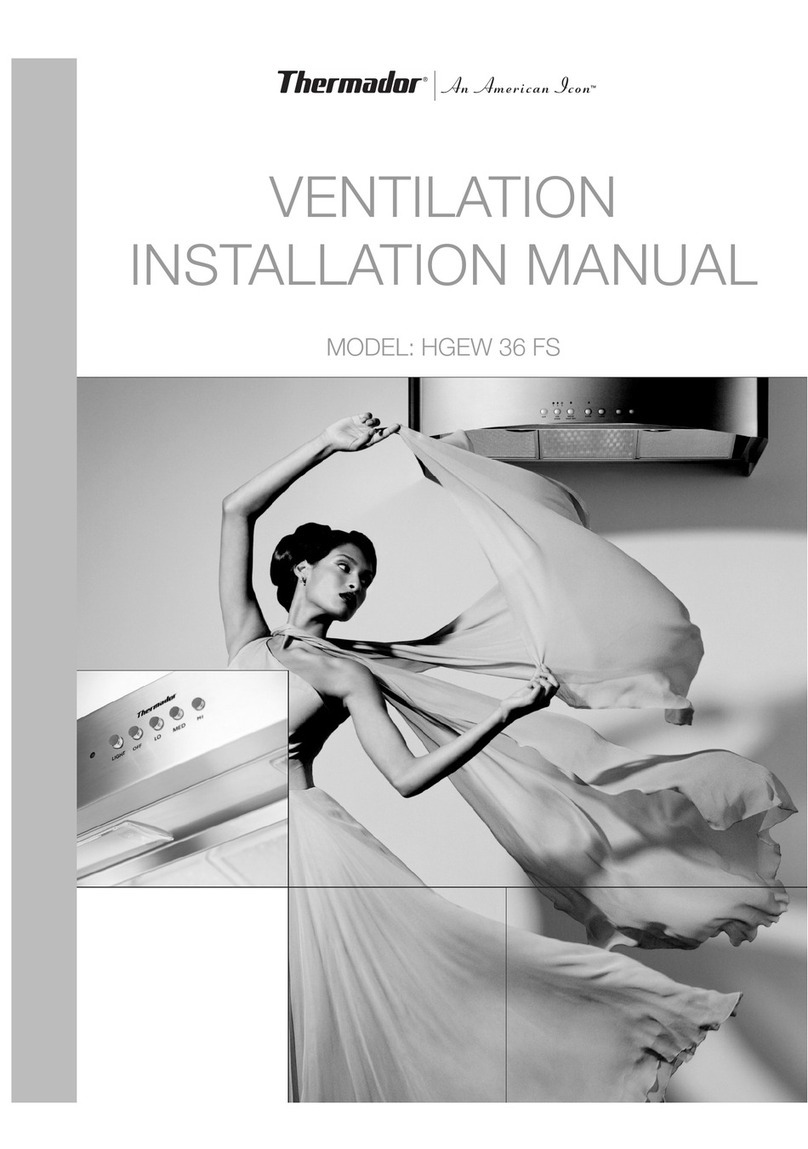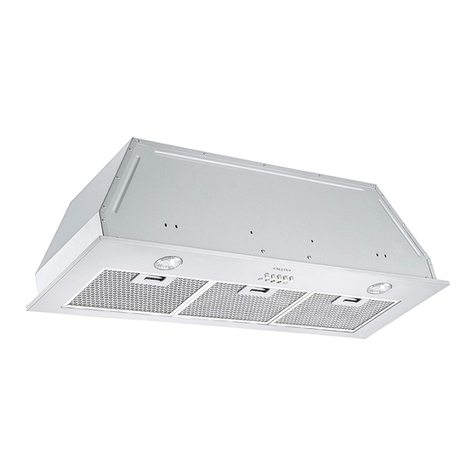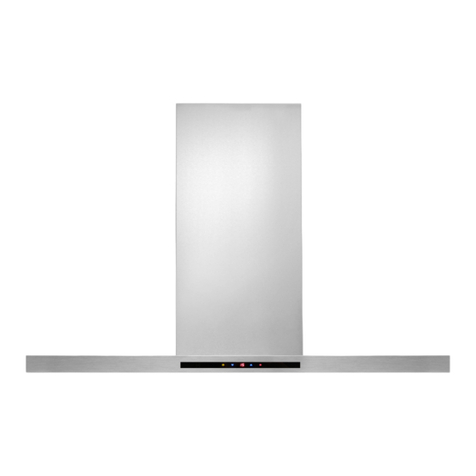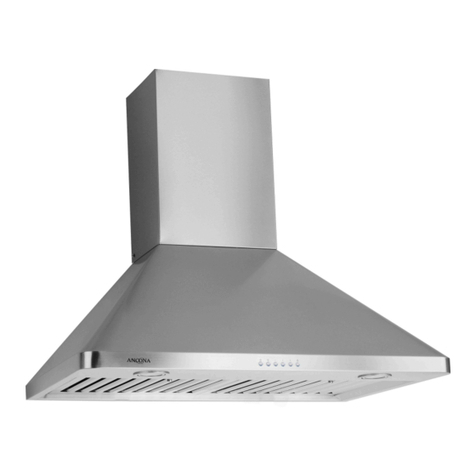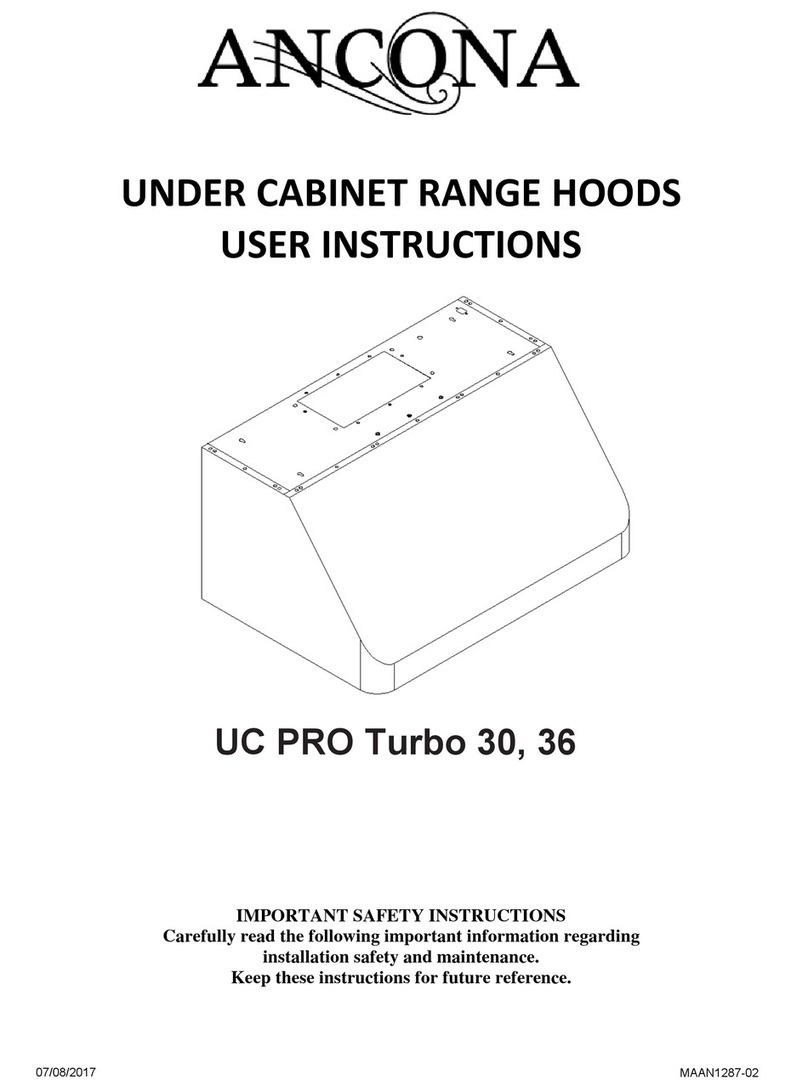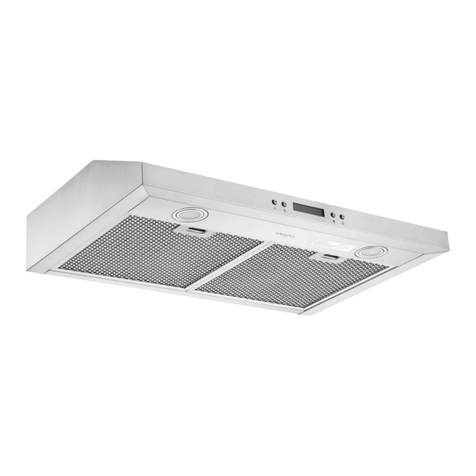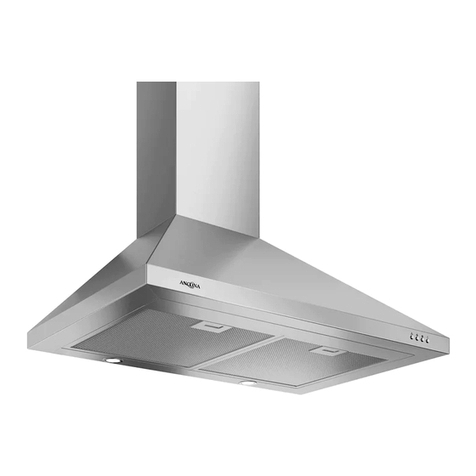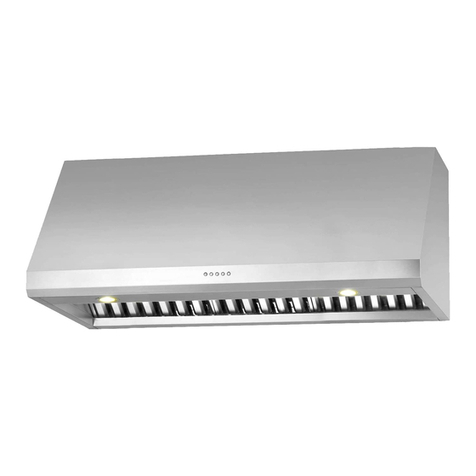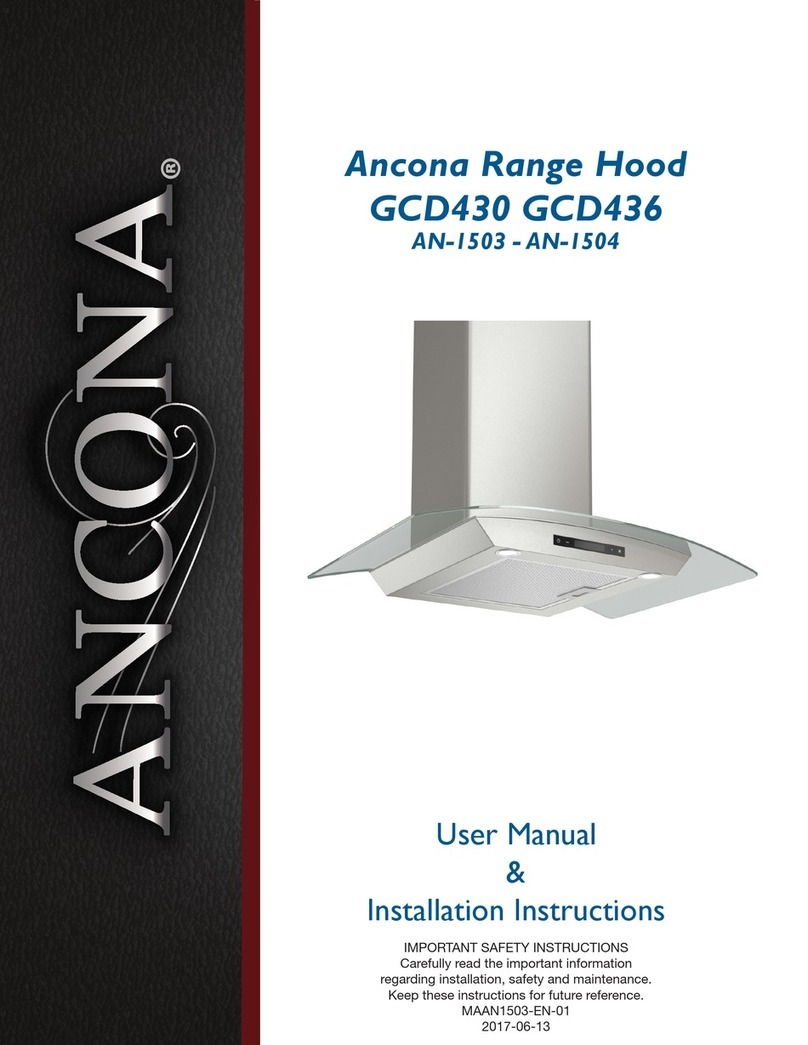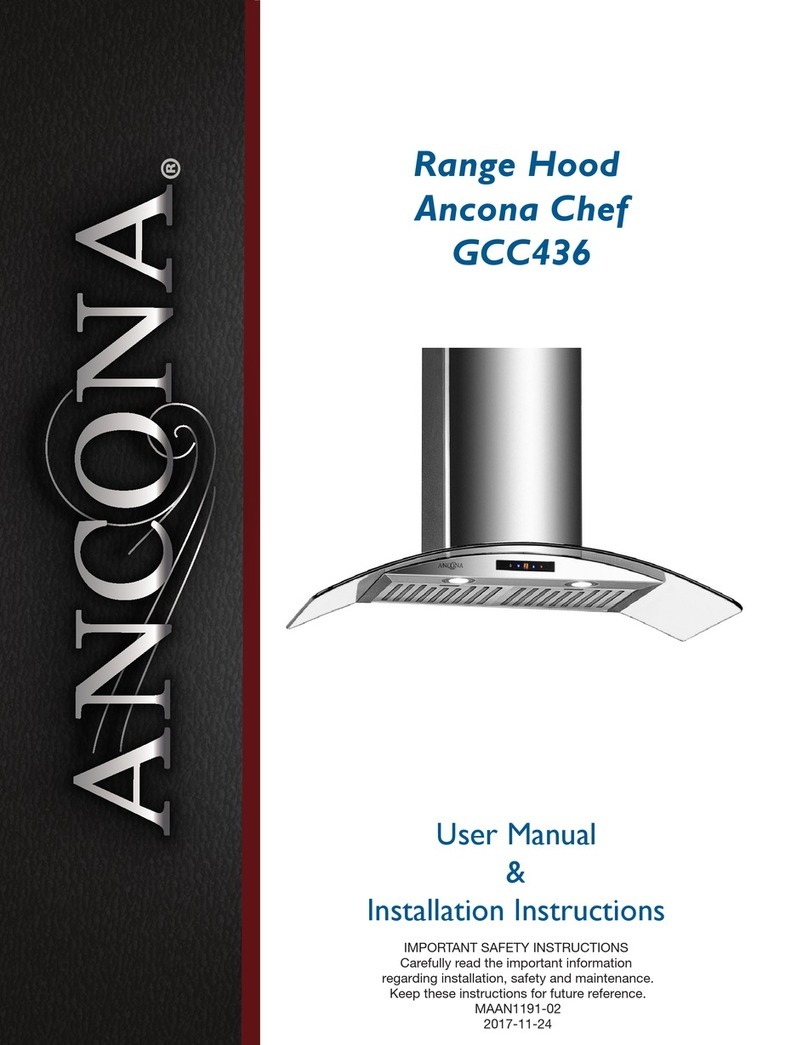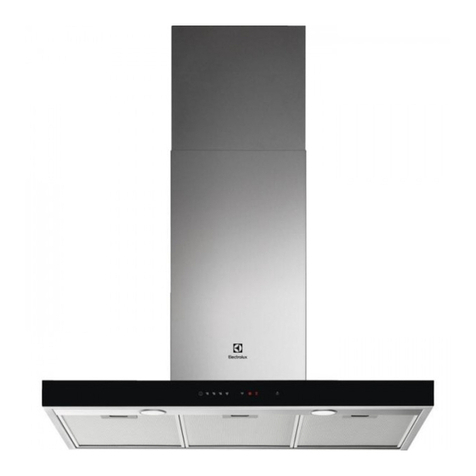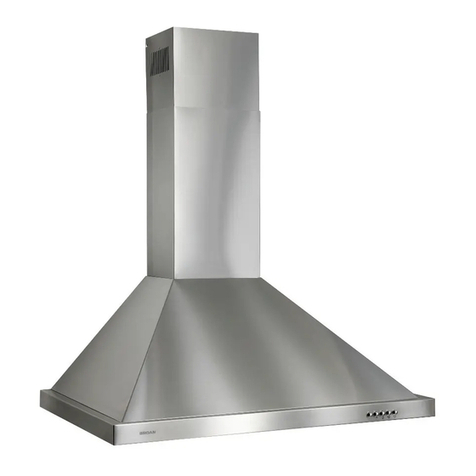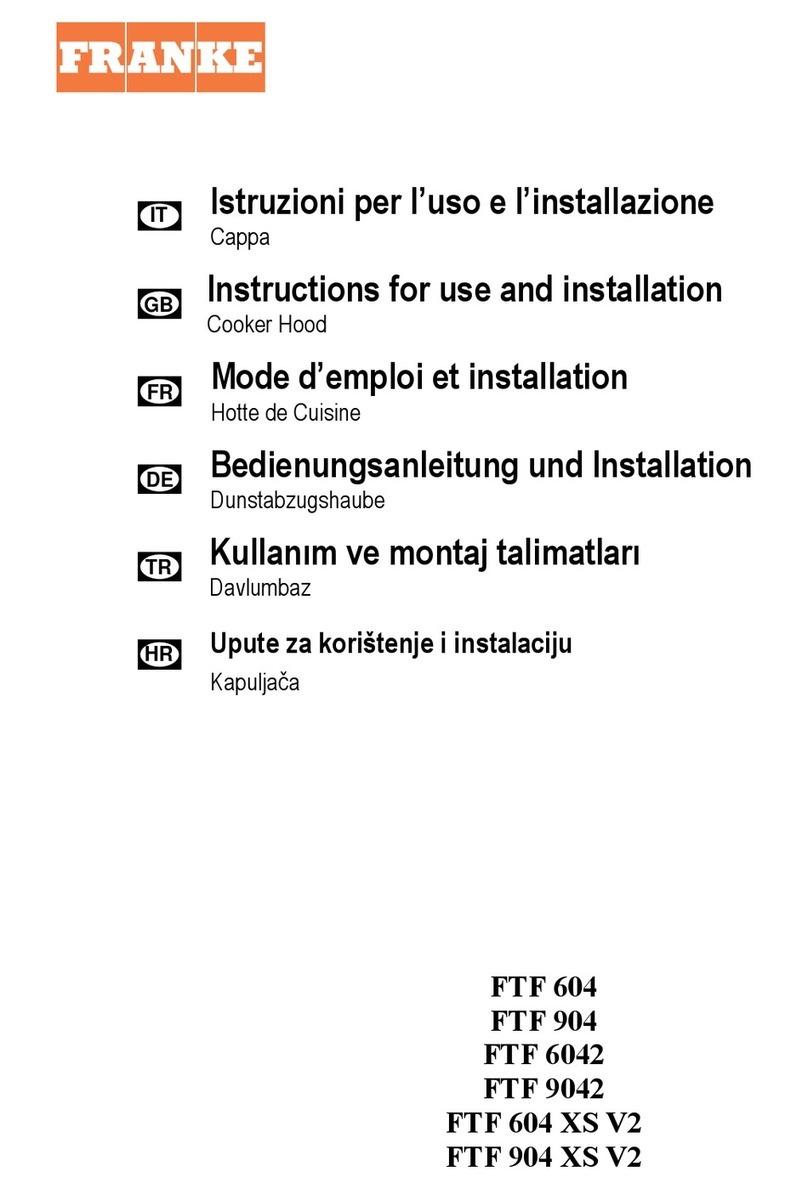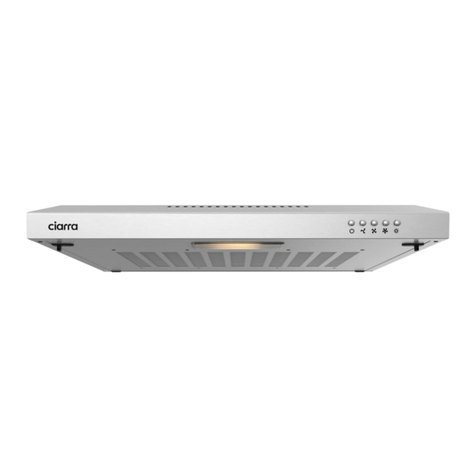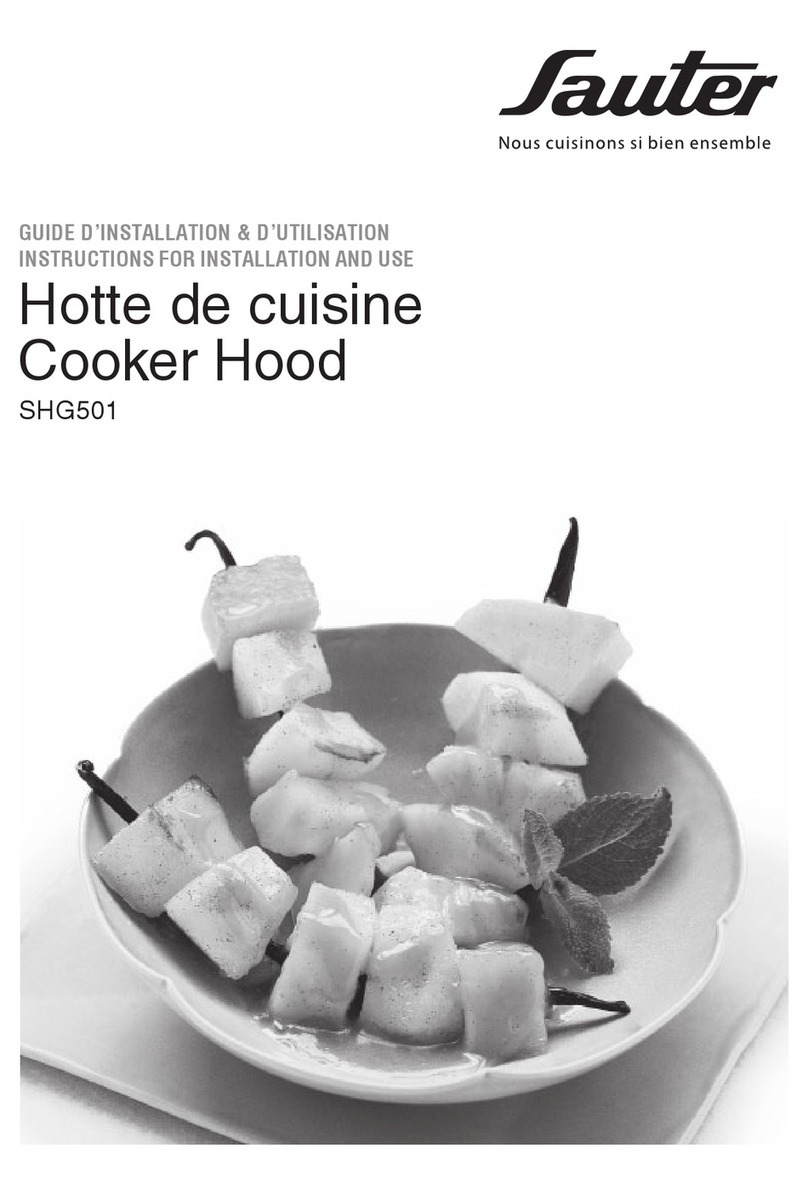
— 4 —
Important Safety Information
• Theinstallationinthismanualisintended
for qualied installers, service technicians or
persons with a similar qualied background.
Installation must be done by qualied
professionals and in accordance with all
applicable codes and standards, including
re-rated construction.
•
The range hood may have very sharp
edges; please wear protective gloves if it is
necessary to remove any parts for installing,
cleaning or servicing.
•
Activating any switch to ON position before
completing installation may cause damage or
electric shock.
• Duetothesizeofthisrangehood,atwo-
person installation is recommended.
To reduce the risk of re, electric shock, or
injury to persons:
• Forgeneralventilatinguseonly.DO NOT use
toexhausthazardousorexplosivematerials
and vapours.
• WARNING: To Reduce The Risk Of Fire Or
Electric Shock, Do Not Use This Fan With Any
Solid-State Speed Control Device.
• Thecombustionairowneededforsafe
operation of fuel-burning equipment may be
affected by this unit’s operation. Follow the
heating equipment manufacturer’s guideline
and safety standards such as those published
by the National Fire Protection Association
(NFPA), and the American Society of Heating,
Refrigeration and Air Conditioning Engineers
(ASHRAE), and other local code authorities.
• Beforeservicingorcleaningtheunit,switch
power off at service panel and lock the service
disconnecting means to prevent power from
being switched on accidentally. When the
service disconnecting means cannot be
locked, securely fasten a prominent warning
device, such as a tag, to the service panel.
• Cleangrease-ladensurfacesfrequently.To
optimizeperformanceandtodisperseair
properly, make sure to vent air outside. DO
NOT vent exhaust into spaces between walls,
crawl spaces, ceilings, attics or garages.
•
Ducted fans MUST always be vented to
the outdoors.
• ThisunitMUSTbegroundedandusedwith
metal ductwork only.
• Sufcientairisneededforpropercombustion
and exhausting of gases through the duct to
prevent back drafting.
• Whencuttingordrillingintowallorceiling,be
careful not to damage electrical wiring or other
hidden utilities.
• Allelectricalwiringmustbeproperlyinstalled,
insulated and grounded.
•
Old ductwork should be cleaned or replaced
if necessary to avoid the possibility of a
grease re.
•
Check all joints on ductwork to ensure
proper connection; all joints should be
properly taped using a certied aluminum
or foil tape.
• Usethisunitonlyinthemannerintended
by the manufacturer. If you have questions,
contact the vendor.
READ AND SAVE THESE
INSTRUCTIONS
READ ALL INSTRUCTIONS BEFORE USE
Read and follow all instructions before using the range hood to prevent the risk of re, electric shock,
personal injury, or damage when using the range hood or appliances with the range hood. This guide
does not cover all possible conditions that may occur. Always contact your service technician or
manufacturer about problems that you do not understand.

